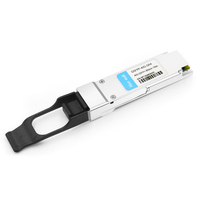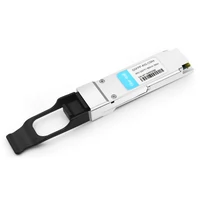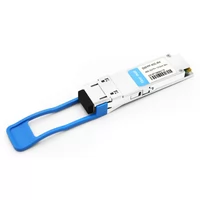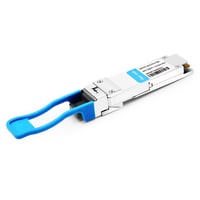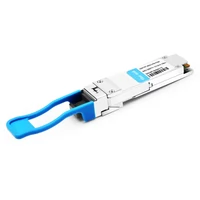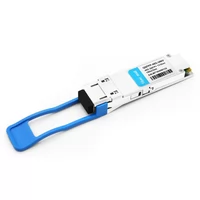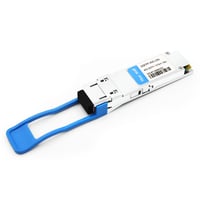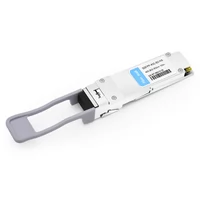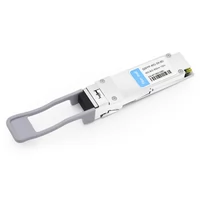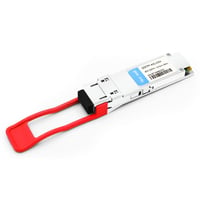Arista transceivers make data transmission smooth and establish connections within high-performance networks. This manual fully covers Arista transceivers by explaining their technical specifications, how they work, and where they can be applied. The writer also wants the reader to understand the different forms and types of these devices based on compatibility with other systems and the optical technologies needed for their operation. Finally, it should be clear why such things are essential when building efficient network infrastructures to improve reliability across all data centers used for various operations.
Table of Contents
ToggleWhat is an Arista Transceiver?
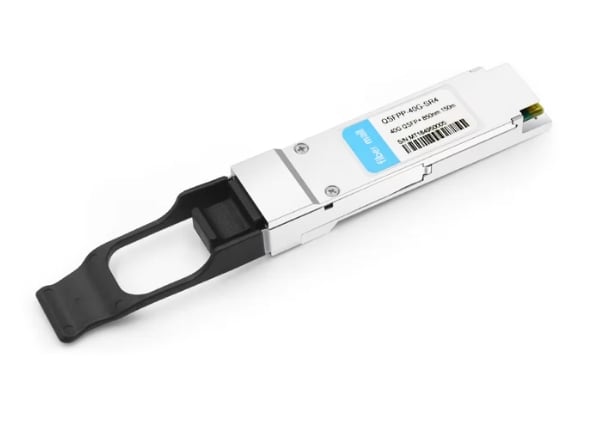
Introduction to Arista and their Transceiver Modules
Arista Networks was established in 2004. It is a top supplier of software-controlled cloud networking systems. The company’s areas of expertise are high-capacity network hardware and various transceiver modules that enable rapid data transfer across different settings. The trustworthiness and adaptability of Arista’s transceivers have been proven repeatedly; they can accommodate many protocols and optical technologies to suit any needs brought about by present-day data centers. These components act as intermediaries connecting devices at high speeds, saving up on bandwidth while ensuring low latency, thus making them critical for cloud architectures and data-heavy applications.
Key Features of Arista Transceivers
Arista transceivers are designed with various features that improve their functionality and ability to perform in advanced networking settings.
- High Compatibility: These transceivers are designed to work effectively with different types of network equipment, ensuring wide interoperability across vendors and systems.
- Different Form Factors: The transceivers come in several form factors, including SFP, SFP+, QSFP, and QSFP28, to accommodate diverse bandwidth requirements and enable easy integration into the existing infrastructure.
- Operational Flexibility: Modules like this support a variety of protocols such as Ethernet or Fibre Channel, making them suitable for different data transmission needs.
- Strong Performance: Networks’ optimal performance is achieved through high-speed data transfer rates provided by Arista transceivers, up to 400Gbps, while keeping latency at the lowest possible levels, thus allowing for more efficiency.
- Advanced Optical Technologies: The state-of-the-art optical technologies used in these modules improve signal quality and extend transmission distances, thereby suiting both short-range and long-range applications.
- Quality Assurance: Arista places great emphasis on product reliability and quality assurance measures taken during the manufacturing process, which are backed by thorough testing procedures that conform to industry standards and expectations.
In summary, these characteristics empower Data Centers with the higher performance levels, scalability, and operational efficiencies required for cloud networking infrastructures.
Typical Applications for Arista Modules
Arista modules are used in many different situations because they can satisfy a wide range of networking requirements, including up to 2-kilometer distances. Below are some examples:
- Data Centers: Modern data center architectures rely heavily on Arista transceivers to connect servers with switching systems for high-speed cloud service data transmission.
- High-Performance Computing (HPC): Arista modules’ ability to achieve low latency and high data rates is instrumental in HPC, where fast processing of large amounts of data is needed for numerical calculations.
- Telecommunication Networks: These types of transceivers help increase bandwidth efficiency within telecommunication systems while supporting different service offerings.
- Enterprise Networks: Arista transceivers can address current and future scalability needs for enterprises looking for reliable and quick connectivity between devices across their networks.
- Internet Service Providers (ISPs): As gigabit services become more common among ISPs worldwide, they have started using Arista modules not only to optimize network performance but also to ensure efficient data delivery, which contributes greatly to improving customer experience overall.
Arista modules have numerous applications that help maintain high-performance networks in various environments.
How Do You Choose the Right SFP Transceiver?
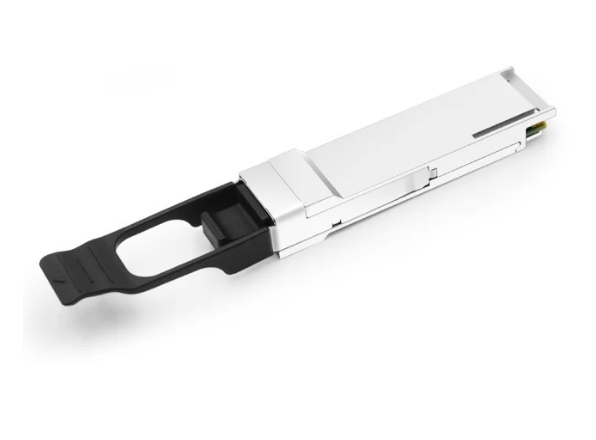
Understanding SFP Specifications and Compatibility
When choosing an SFP (small form-factor pluggable) transceiver, it is important to look at a few key specifications that are necessary for compatibility with existing hardware and best performance. For one, the transceiver’s data rate should match the network’s; gigabit SFPs usually support speeds from 100 Mbps to 10 Gbps. Different SFPs are designed for short-range (SR), medium-range (LR), or long-range (ZR) applications depending on their optical wavelength, so it is necessary to consider transmission distance, too.
Also, the connector type must match the optical network interface; duplex LC, SC, and MPO connectors are the most common. One needs to know if this product works well with other devices, such as switches and routers – typically verified through the manufacturer’s specifications or compatibility lists. Another thing you might want to think about is whether this item only works with certain vendors’ equipment or meets industry standards like IEEE because this could affect its integration into multi-vendor environments. Knowing all these aspects will enable one to select and deploy appropriate SFP transceivers across various network scenarios.
Benefits of Using Arista Compatible SFP Modules
Arista-compatible SFP modules are a great choice for those searching for reliability and performance. First, these modules are designed to seamlessly integrate with Arista’s switching and routing platforms, which ensures that they work as expected while also reducing chances for interoperability issues. Moreover, Arista SFPs undergo thorough quality tests in addition to being tested for performance; this leads to low latency and high throughput, which is especially important for applications dealing with large volumes of data.
In addition to the above benefits of using Arista-compatible SFPs, there is also a cost benefit since they are priced competitively vis-à-vis proprietary ones without sacrificing performance measures, resulting in significant savings during widespread rollouts. Last but not least, it provides various options, such as different transmission distances alongside data rates, thus enabling administrators to tailor their configurations based on specific operational needs effectively. In general terms, adopting these models helps optimize network performance while still keeping strong connections alive.
Comparing SFP, QSFP, and 40G Transceivers
It’s important to know what they are and when they are used, but there are some differences between SFP, QSFP, and 40G transceivers. There are many applications of small form-factor pluggable (SFP) transceivers that can operate at data rates up to 1 Gbps for short or long distances in network environments. In contrast, quad small form-factor pluggable (QSFP) transceivers can transmit data at speeds of 4 Gbps, enabling four channels to work concurrently, making them ideal for connections where high density and bandwidth requirements need consideration.
As a subset of QSFP technology, 40G transceivers were explicitly designed for higher throughput networks that support data rates of up to 40 Gbps. This level of performance is instrumental in data center interconnection (DCI) and high-performance computing(HPC), where large amounts of data must be moved quickly between systems. In conclusion, when deciding which type of fiber optic module would be best suited for your needs, it is always good practice to take into account not only what you want from it in terms of speed or distance but also how efficiently such a device can operate within considering overall network architecture design.
How to Ensure Quality and Compliance in Transceiver Modules?
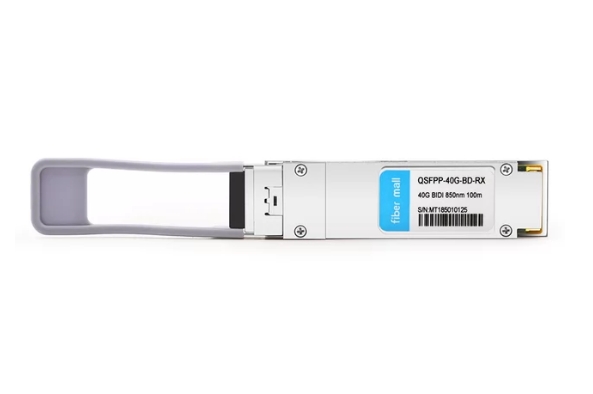
Quality Testing Procedures for Arista Transceivers
A few testing methods should be used to ensure the quality and compliance of Arista transceivers. Firstly, the manufacturers must perform functional tests on all devices to check if they meet the required standards for data rates, distances, and operational environments. This involves using optics to measure output power, wavelength, and extinction ratio, among other things.
The next step is environmental testing, which helps evaluate how well each device can work under different conditions, including extreme temperatures or humidity levels that mimic real-life situations where people operate them. Also, it is important for such products to comply with industry norms set forth by bodies like IEEE and TIA because this guarantees their compatibility with other network components.
In addition, ALT (Accelerated Life Testing) offers a way of unveiling potential future problems while simultaneously validating endurance aspects over time. Finally, PPQA (Post Production Quality Assurance) checks are an extra confidence booster on transceiver quality by checking performance consistency against random samples after production. These processes enable businesses to achieve optimal network performance while cutting down downtimes resulting from failed transceivers.
Understanding DOM and DDM Features in SFP Transceivers
Digital Optical Monitoring (DOM) and Digital Diagnostic Monitoring (DDM) are essential functionalities of SFP transceivers that offer network administrators real-time diagnosis. This means that it enables a person to continuously watch the operational state of a given transceiver by exposing such critical parameters as temperature, voltage, bias current, and optical output power, among others. Maintenance can be done proactively with this characteristic because potential problems may be detected promptly, thus leading to quick fixes and improving network reliability.
Unlike DOM in terms of focus, DDM provides an additional layer for monitoring link integrity by giving detailed diagnostic information about transmission media. In other words, these statistics are related to signal quality and performance metrics necessary for evaluating whether or not the connection is still good. Both features work together so that different parts can be controlled at once, making them very effective tools for managing networks by operators who want optimum performance always guaranteed. Organizations should use such monitoring capabilities if they intend to beef up their strategies while minimizing risks associated with failures in communication systems, especially when active optical cables have been adopted.
The Importance of OEM and MSA Compliance
To ensure that SFP transceivers work with different systems, they should follow the rules of the Original Equipment Manufacturer (OEM) and comply with the Multi-Source Agreement (MSA). Through OEM compliance, the manufacturer sets standards for components, which ensures their quality and allows for warranties and support. This is important for organizations looking forward to using trustworthy hardware in their networks.
Additionally, MSA conformity provides guidelines on how different vendor items can be compatible, thus reducing the chances of interoperability failure. Different companies’ SFP transceivers will seamlessly work together if they meet MSA requirements, making it easier to upgrade or swap out without being tied down by specific suppliers. This means that strict observance of both OEM specifications and MSA standards improves network performance and scalability, thereby preparing businesses for future growth in technology-driven environments where change happens rapidly.
What Are the Installation and Maintenance Tips for Optical Transceivers?
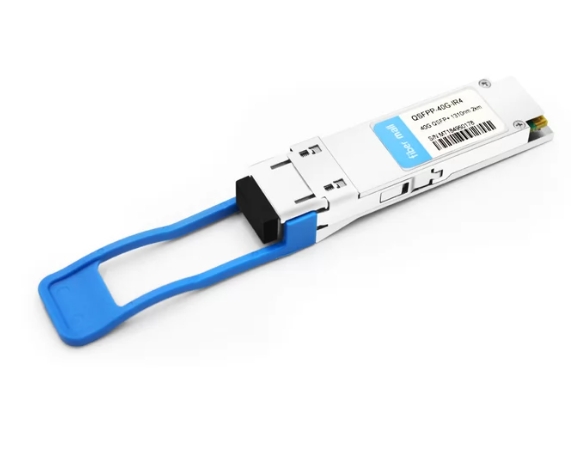
Step-by-Step Installation Guide for Optical Transceivers
- Prepare the Site for Installation: Make sure the place is suitable for installation, which means clean, antistatic, and free from dust or excessive moisture. Confirm that you have all the necessary tools and safety gear.
- Find the Right Transceiver: Choose an optical transceiver that best suits your application. Consider things like data rate, supported protocols, and distance, among others. Make sure it is compatible with your network hardware, too.
- Power down equipment: Turn off the power to any devices where the transceiver will be installed to avoid electrical damage or performance problems during setup.
- Examine Transceiver: Check the optical transceiver for any physical damage. Be careful not to remove dust caps until needed to prevent contamination.
- Insert Transceiver: Match up connectors of transceivers such as duplex LC with corresponding ports on switches or routers, then gently push it in until you hear a click sound that shows it’s tight enough, but not much force should be applied.
- Reconnect and Power On Equipment: When the transceiver is installed, connect all necessary cables back together and turn on the power supply. Check any indicator lights or diagnostics to confirm a successful installation.
- Test Connectivity: Once the equipment has been powered up, tests will be conducted to show whether the optical transceiver is working correctly within this network. Use tools for monitoring networks to ensure quality data transmission and performance.
- Document the Installation: Make a record detailing the installation, which should contain information about what type of transceiver was used, its location, and any performance metrics achieved through testing. This document will be important for future troubleshooting and maintenance of direct-attach cables and optic transceivers.
These steps help organizations seamlessly integrate SFP transceiver modules, among other types, into their network infrastructure, thereby minimizing downtime while boosting overall efficiency.
Regular Maintenance Practices for Optical Transceivers
To make sure that optical transceivers last long and work well, you should carry out regular maintenance. Here are some important things to do to maintain them based on what is recommended now:
- Regular Cleaning: Clean the dust from optical connectors and ports at standard intervals, as this can significantly lower signal quality.
- Monitoring temperature: Keep the working temperature within the set limits. Overheating may lead to transceivers failing early, so it is important to always check environmental conditions.
- Checking for damage: Sometimes, look over transceiver modules to discover any physical damages or signs of usage/weariness. Identifying problems early enough helps prevent more complications and ensures that networks remain reliable throughout.
- Updating Firmware: Frequently verify if new firmware updates are available, then apply them as provided by manufacturers. These enhance performance and security, thereby making certain that these devices meet changing network standards.
- Monitor Performance: Use network monitoring tools designed for checking transceiver performance metrics like error rates/signal loss regularly. These tools are especially useful where 1310nm 10km transceivers are used within a system. This information can reveal potential problems before they become serious.
By following these maintenance best practices, organizations can improve reliability and efficiency, thus creating strong network foundations with their optic fiber gadgets.
How to Optimize Performance in Your Data Center with Transceivers?
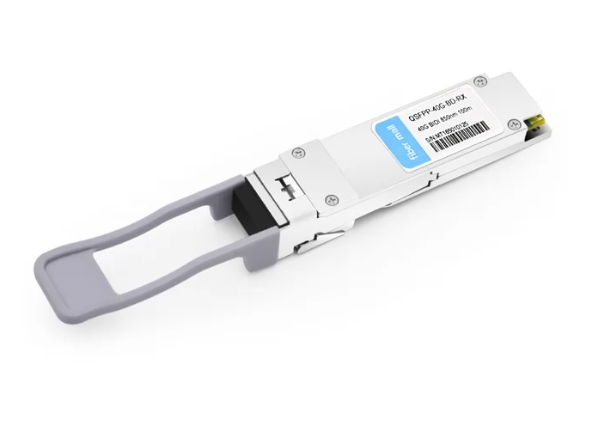
Choosing the Right Optical Transceiver for Your Needs
To ensure that you choose the right optical transceiver for your network infrastructure, there are several things you need to keep in mind:
- Wavelength and Transmission Distance: You should determine what wavelength (which is commonly 850nm, 1310nm, or 1550nm) and transmission distance are suitable for your application. For example, short-range applications can use multimode fibers with lower wavelengths, while single-mode fibers operating at longer wavelengths are perfect for long-range connections.
- Form Factor Compatibility: Different form factors, such as SFP, SFP+, and QSFP+, come with different sizes of optical transceivers, which should match up with your hardware. So, make sure that the chosen module fits the physical and electrical requirements of switches or routers, including compatibility with direct-attach options.
- Data Rate Requirements: Determine what data rate your network needs to support. These modules operate at various speeds, such as 1Gbps, 10Gbps, or 100Gbps; hence, choosing an appropriate one will prevent any bottlenecks from occurring during operation.
- Cost Factors: Evaluate the budget constraints against desired optical transceiver performance and lifetime, especially with high-performance opticals. While they may have better characteristics, it should be noted that models at the top end are not necessarily the most economical choice; rather, what counts is striking a balance between cost and performance.
- Vendor Support and Warranty: Opt for vendors who provide strong customer services and warranty options on their products; this helps improve reliability during troubleshooting whenever there’s a functionality issue.
In light of these points, organizations can choose an appropriate optical transceiver that best suits their operational requirements while ensuring a stable data communication ambiance that supports higher output.
Maximizing Efficiency with the Use of High-Performance Transceivers
To make a network environment more efficient, high-performance transceivers are necessary. There are three main ways of achieving this:
- Optimized Network Design: Implementing a structured network architecture that utilizes application-specific high-performance transceivers will greatly increase data throughput and reduce latency. This process consists of studying traffic patterns and choosing the right types of transceivers that match the bandwidth requirements.
- Scalability Considerations: Considering scalability when selecting high-performance transceivers enables them to be used during future network upgrades. This means that businesses can expand their network capabilities faster without replacing the existing ones immediately, thereby safeguarding investments made earlier.
- Regular Performance Monitoring: Continuous evaluation and monitoring of how well a transceiver performs with tools for managing networks can help identify bottlenecks or areas needing improvement. Such an active approach ensures that the system operates at its best level while keeping pace with technological advancements through enhancements.
Enterprises should combine these methods to fully exploit high-performance transceivers, thus creating stronger and more effective networking infrastructures.
Reference Sources
Frequently Asked Questions (FAQs)
Q: What does it mean by Arista transceiver?
A: An Arista transceiver is a high-performance optical transceiver module created by Arista Networks. It is used in fiber optic communication systems to transmit and receive data over long distances via single-mode fiber (SMF) or other kinds of optical cables.
Q: What are the different types of Arista transceivers?
A: Arista Networks offers several types of transceivers, including SFP, SFP+, SFP28, QSFP, QSFP28, and QSFP-DD, which support different data rates, such as 1G, 10G, 25G, 40G, 100G, and even 400G, and are compliant with industry standards for seamless integration.
Q: What makes SMF different from MMF transceivers?
A: Normally speaking, SMF (Single Mode Fiber) transceivers like those with a 1310nm wavelength provide longer reach capabilities(up to 80km) than MMF(Multi-Mode Fiber) ones do. SMF is usually used for high data rate applications over long distances, while MMF is more cost-effective for shorter distance applications.
Q: How can I determine how far an Arista transceiver will reach?
A: An Arista transceiver’s range depends on its type and specifications. For instance, an Arista SFP 1310nm transceiver might be able to cover up to 10km using single-mode fiber. Always consult the datasheet for exact reach specifications.
Q: Is it easy to install Arista Transceivers?
A: Yes, they were designed this way. A key goal for Arista when designing these devices was simplicity because they usually employ LC connectors, which are simply plug-and-play devices. All you have to do is insert them into appropriate ports without complicated settings.
Q: Can non-Arista equipment be used with Arista transceivers?
A: Many Arista transceivers comply with industry standards like IEEE, which allows them to work with various manufacturers’ devices, provided the equipment supports the same SFP module type and specifications.
Q: What is a DOM transceiver?
A: A Digital Optical Monitoring (DOM) transceiver is an optical transceiver with built-in monitoring functions. It gives real-time statistics on factors like temperature, voltage, or power level, thus enabling better network diagnostics and management in high-performance optic systems.
Q: How do I select the suitable Arista transceiver for my network?
A: For a proper choice of an Arista transceiver, you should take into account the required data rate (e.g., 10G, 25G, 100G), distance to be covered (e.g., 1km, 10km, 40km), and type of fiber optic cable being used (SMF or MMF). Please refer to the respective datasheets of these modules or seek assistance from Arista Networks if necessary.
Q: Are there any customer reviews about Arista transceivers?
A: Yes, customer reviews are available online at different platforms, such as networking forums where customers write about their experiences using these products or e-commerce websites where people can purchase them.
Q: Do these come with a warranty?
A: Absolutely! They all have lifetime warranties so that customers get only reliable, high-performing items. These items may contain defects either in materials used during manufacturing processes or due to faults arising out of workmanship under normal usage conditions.
Related Products:
-
 Arista Networks QSFP-40G-SR4 Compatible 40G QSFP+ SR4 850nm 150m MTP/MPO MMF DDM Transceiver Module
$25.00
Arista Networks QSFP-40G-SR4 Compatible 40G QSFP+ SR4 850nm 150m MTP/MPO MMF DDM Transceiver Module
$25.00
-
 Arista Networks QSFP-40G-XSR4 Compatible 40G QSFP+ XSR4 850nm 400m MTP/MPO MMF DDM Transceiver Module
$30.00
Arista Networks QSFP-40G-XSR4 Compatible 40G QSFP+ XSR4 850nm 400m MTP/MPO MMF DDM Transceiver Module
$30.00
-
 Arista Networks QSFP-40G-LRL4 Compatible 40G QSFP+ LR4L 1310nm (CWDM4) 1km LC SMF DDM Transceiver Module
$129.00
Arista Networks QSFP-40G-LRL4 Compatible 40G QSFP+ LR4L 1310nm (CWDM4) 1km LC SMF DDM Transceiver Module
$129.00
-
 Arista Networks QSFP-40G-PLRL4 Compatible 40G QSFP+ PLRL4 1310nm 2km MTP/MPO SMF DDM Transceiver Module
$139.00
Arista Networks QSFP-40G-PLRL4 Compatible 40G QSFP+ PLRL4 1310nm 2km MTP/MPO SMF DDM Transceiver Module
$139.00
-
 Arista Networks QSFP-40G-PLR4 Compatible 40G QSFP+ PLR4 1310nm 10km MTP/MPO SMF DDM Transceiver Module
$149.00
Arista Networks QSFP-40G-PLR4 Compatible 40G QSFP+ PLR4 1310nm 10km MTP/MPO SMF DDM Transceiver Module
$149.00
-
 Arista Networks QSFP-40G-UNIV Compatible 40G QSFP+ UNIV 1310nm 150m/2km LC MMF/SMF DDM Transceiver Module
$149.00
Arista Networks QSFP-40G-UNIV Compatible 40G QSFP+ UNIV 1310nm 150m/2km LC MMF/SMF DDM Transceiver Module
$149.00
-
 Arista Networks QSFP-40G-LR4 Compatible 40G QSFP+ LR4 1310nm (CWDM4) 10km LC SMF DDM Transceiver Module
$149.00
Arista Networks QSFP-40G-LR4 Compatible 40G QSFP+ LR4 1310nm (CWDM4) 10km LC SMF DDM Transceiver Module
$149.00
-
 Arista Networks QSFP-40G-SRBD-R Compatible 40G QSFP+ SR Bi-Directional 850nm/900nm 100m/150m Duplex LC MMF Optic Module Receiver Only
$165.00
Arista Networks QSFP-40G-SRBD-R Compatible 40G QSFP+ SR Bi-Directional 850nm/900nm 100m/150m Duplex LC MMF Optic Module Receiver Only
$165.00
-
 Arista Networks QSFP-40G-SRBD Compatible 40G QSFP+ SR Bi-Directional 850nm/900nm 100m/150m Duplex LC MMF Transceiver Module
$249.00
Arista Networks QSFP-40G-SRBD Compatible 40G QSFP+ SR Bi-Directional 850nm/900nm 100m/150m Duplex LC MMF Transceiver Module
$249.00
-
 Arista Networks QSFP-40G-ER4 Compatible 40G QSFP+ ER4 1310nm (CWDM4) 40km LC SMF DDM Transceiver Module
$449.00
Arista Networks QSFP-40G-ER4 Compatible 40G QSFP+ ER4 1310nm (CWDM4) 40km LC SMF DDM Transceiver Module
$449.00

